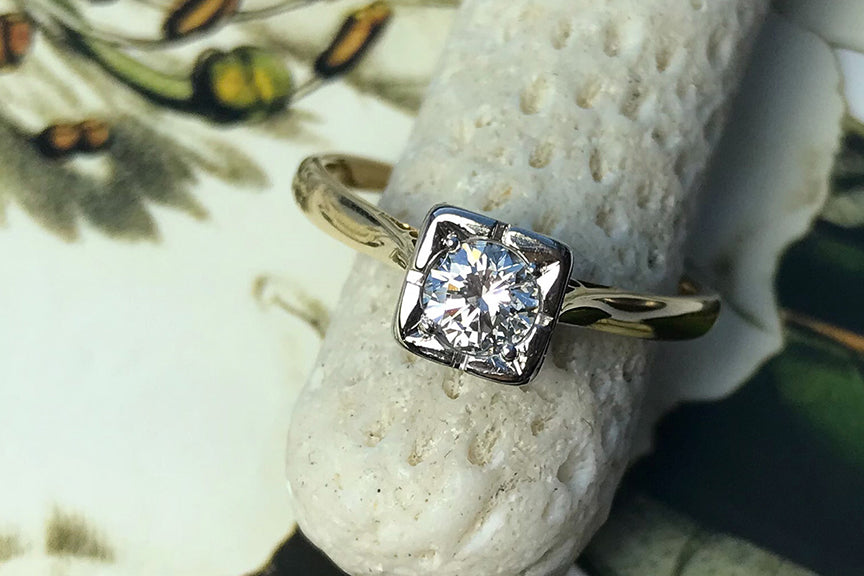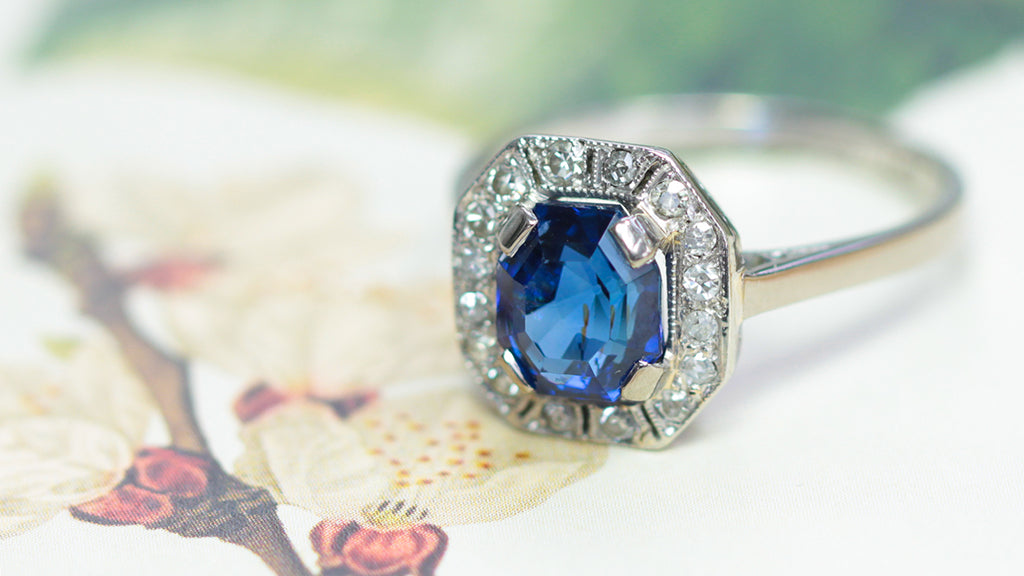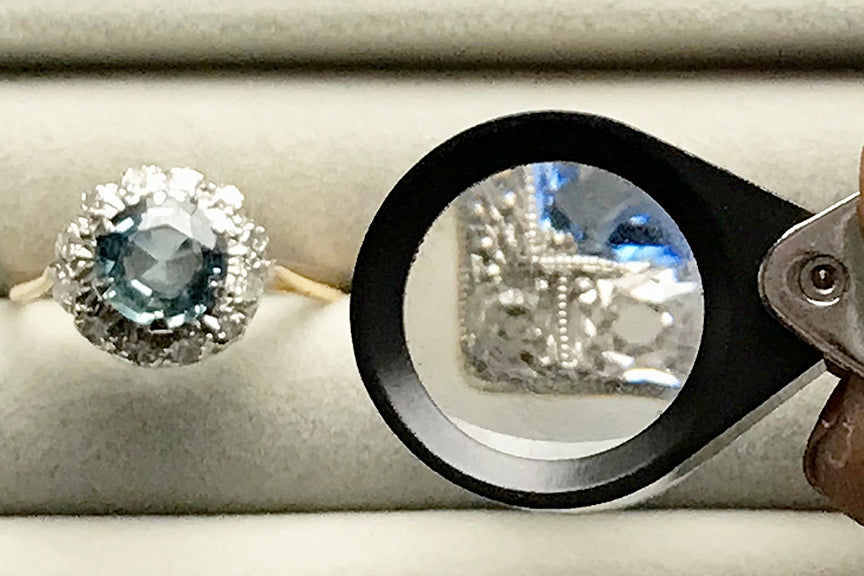
What is a vintage ring?
A broad-brush term used to describe items from the past, the word “vintage” is widely used, and often misused, across the worlds of fashion, furniture and jewellery.
But how old must a ring be, exactly, for it to be labelled vintage? Trawling through the racks of a retro clothes store, the word “vintage” is loosely used to describe pretty much any item that is pre-worn and vintage-esque. With jewellery it is different, though. A vintage ring is a much bigger investment, and buyers like to know that what they are buying is authentic.
Most antiques dealers would classify a ring as vintage if it is more than 40 years old, which means it would have to have been made in 1982 or earlier to qualify. But it is the starting point – the transition from an item being classified as an antique to it being described as vintage – that is a little more complicated.

As we explained in a previous blog, what is an antique ring, we, and many other sellers of antique and vintage jewellery, use the end of the Art Deco era as the point when the antique era ends, and the vintage age begins. Why?
The flamboyant Art Deco style quickly went out of fashion with the onset of World War II in 1939, making way for the hugely influential mid-century modern movement, which changed the world of design forever. Driven by a post-war boom in the economy that continued until the 1970s, the style was an alluring combination of post-war practicality, clean lines and streamlined simplicity that followed the ethos of “form follows function” and remains hugely popular today.

Daisy, a prime example of the bold colour and geometric contours of the Art Deco era
The influence of the mid-century modern movement had an enduring effect on the world of jewellery. The coloured gemstones, geometric silhouettes and rich yellow gold that were so popular in the Art Deco era replaced by a sleeker aesthetic that was characterised by the Danish designer Georg Jensen and the sculptor Alexander Calder, whose avant-garde, curvilinear jewels are collectors’ pieces today.
It was during the post-war years, in 1947 to be precise, that De Beers coined the marketing slogan, “A diamond is forever”. Accompanied by a major advertising campaign that romanticised the diamond as the ultimate symbol of love, diamonds quickly became the stone of choice for engagement rings. This fundamental shift in the design of engagement rings, away from the warm yellow gold and coloured gemstones of the Art Deco era towards a cleaner, more minimal look, simply embellished with a diamond centre stone, is another compelling reason why the post-Deco years are a clear and logical cut-off point between “antique” and “vintage”.
 Elizabeth, a mid-20th century creation, is all clean lines, muted tones and pared-back simplicity
Elizabeth, a mid-20th century creation, is all clean lines, muted tones and pared-back simplicity
Each decade that followed represents an iconic moment in vintage style today. From the swinging sixties to the subversive 1970s, all the way through to the early 1980s, which represent the end of the great era of vintage, it’s a wonderful era to explore if you are searching for a vintage engagement ring.
 Margot, a true vintage beauty hailing from the mid-20th century
Margot, a true vintage beauty hailing from the mid-20th century
From the elegant presence of our elongated Lucinda ring to the striking linearity of Ellen and the delicate, lace-like details of Margot, our diverse collection of vintage jewels beautifully reflects the rich variety of design inspirations to influence the vintage era.


